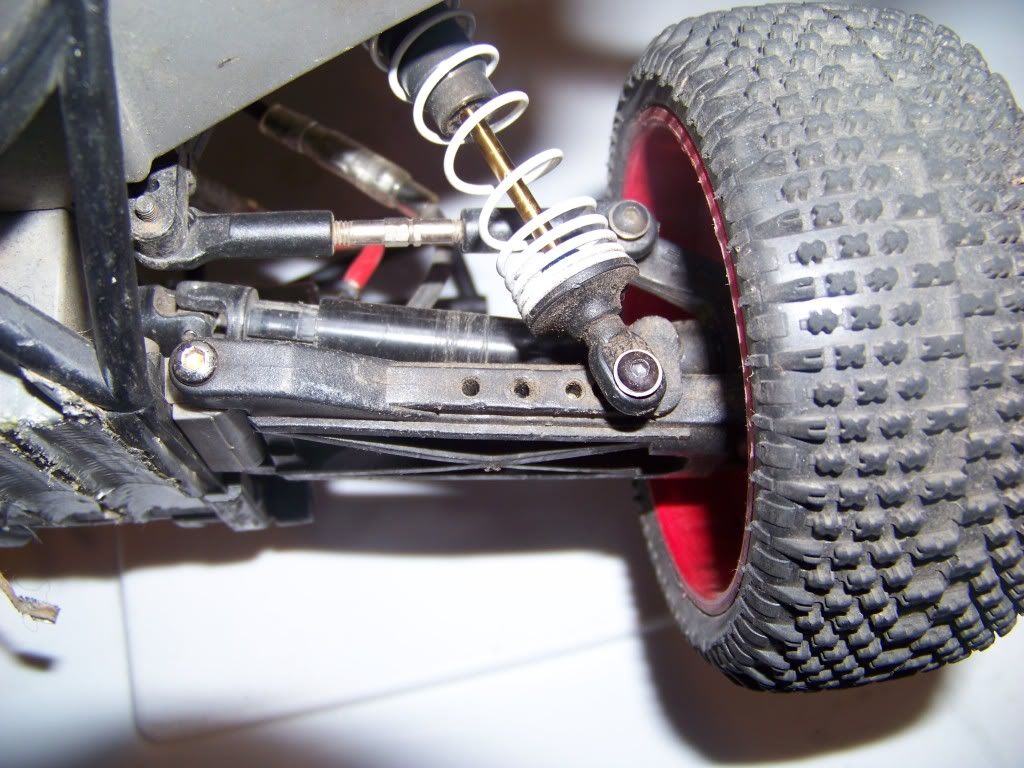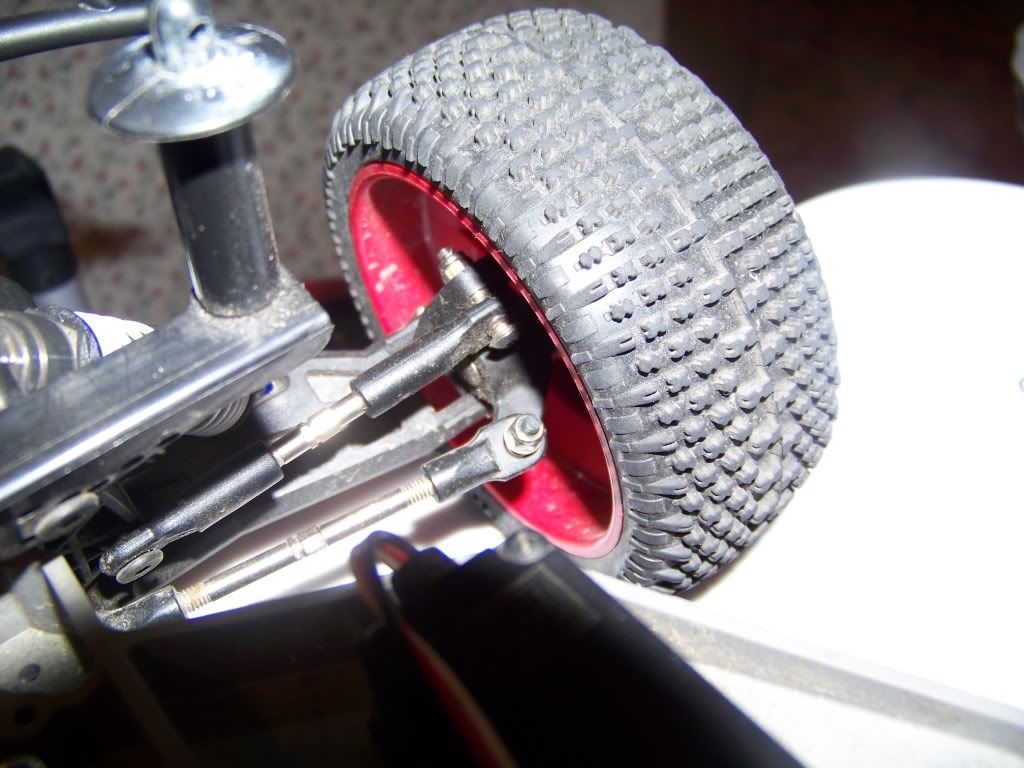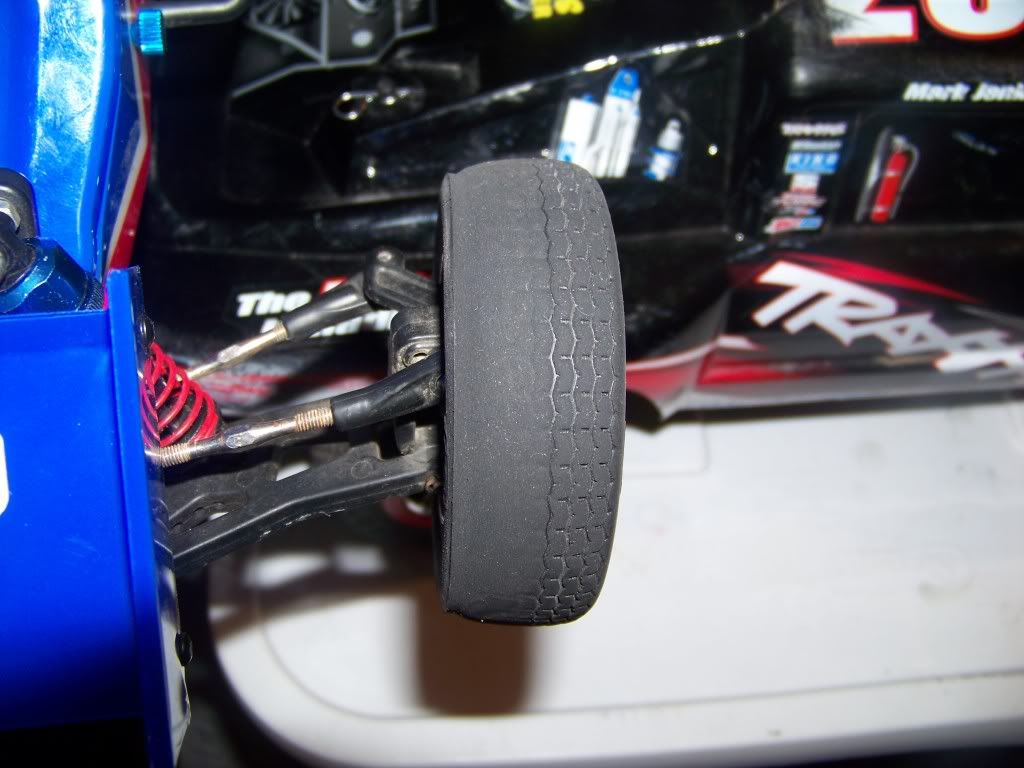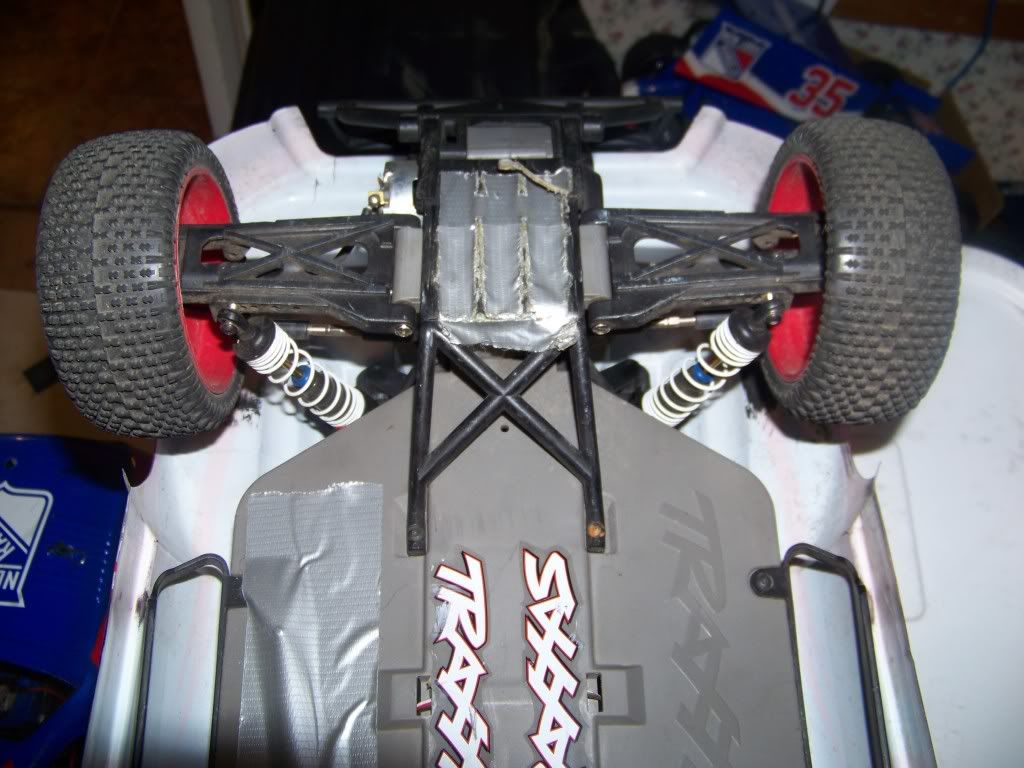When setting up an RC car or truck for a track, its important to note the track conditions. Different conditions call for different setups. A truck that feels dialed on a hard smooth track will be all over the place on a loose bumpy track. It is also important to pay attention to the car or truck itself. Most often how it reacts will dictate what suspension adjustments need to be made. Here are just a few of the adjustments I use to setup my trucks.
Suspension Rates
When it comes to handling, how soft your suspension is set is a big component. A stiffer spring will make the car feel more responsive. It will also help it jump higher and farther. There is a trade-off though. If it is too stiff in the front, the car will have less steering. It will tend to push in the corners. You want to make it soft enough to have decent steering response, without going too far. If your car is too soft in the front, it will tend to tail whip around turns. It will also feel sluggish while turning. In the rear, if you have a harder suspension, it will aid in the car’s steering. However, forward traction will be diminished. If you soften it up, forward traction will improve, but high speed steering will be diminished.
With shocks, what weight oil you use has a direct impact on which handling characteristics change. With a heavier weight in the front, steering will be reduced, but will feel more stable. The car will be easier to drive, more predictable. With a softer shock oil up front, the car will turn more quickly, but can get hard to handle. In the rear, a harder oil will help steering responsiveness, while keeping the rear end stable. With a softer weight oil in the rear, the car will have more traction while accelerating. Generally speaking, if one end has a slightly heavier oil than the other, that end will feel more stable and provide more consistency.
Ride Height
With ride height, a higher car will jump better, but will be less stable in corners. It could even roll over in high traction scenarios (traction roll). A lower ride height will be more stable in turns, and can result in faster cornering speeds. Be careful not to go too low, however. If the car bottoms out on the track it will be thrown around, making it a handful to drive.
Shock Mounting holes
In the front, if the lower shock mount is moved to inner holes on the A arms, it will improve low speed steering, but can make the car feel twitchy. If you move it to outer holes, it will reduce low speed steering, but the car will be easier to drive. Out back, if you move the shocks further in on the A arms, it will help soak up bumps in the track, but stability is reduced. If you move them out, it will aid in stability.
When looking at how a shock is mounted, how much it is inclined is will give you clues to how it impacts handling. A shock that is more inclined will give you better lateral grip, or side bite. But it will feel stiffer, meaning for a bumpy track you will want a softer spring/shock oil. A shock that is more upright will help with jumping, or more particularly landing. It will remove some of the harshness in a track.

Rear lower shock mount

Front lower shock mount
Camber
Camber is the lean angle of the tires while looking at them from the front or back of the car. If while looking from the front of the car, the tops of the tires lean in, it has positive camber. If they lean out, it has negative camber. Positive camber aids in traction while cornering. The outside tire will have more contact with the ground as the weight of the car pushes towards the outside of a turn.

Front Camber and Toe adjustments
The trick is to check tire wear. If it is wearing evenly across the tire, camber is about where it should be. If its wearing towards the outside of the tire, add a little camber. If its wearing towards the inside, you have too much camber.

Example of too much Camber
Toe
Toe refers to the angle of the tires while looking down from the top of the car. If the fronts of the tires are pointing towards the centerline of the car, they have positive toe. if they are pointing away, they have negative toe. In the front, toe in provides greater straight line handling. Having negative toe in the front will help the car turn quicker, but it makes the car more difficult to drive. Most people have either a slight toe in up front, or 0 toe.
Most cars have 1-2 degrees of toe in on the back wheels. Just like the front, it makes the car very easy to drive in a straight line. You should never have toe out in the back, it would make the car very hard to drive.

Rear Toe in
Tires
There are many types of tires on the market of various compounds and tread patterns. Each are designed for specific surfaces and conditions.
A tire made with hard rubber will offer less grip, but longer tire wear. It will also maintain its shape when under acceleration, or while cornering and braking. Conversely, a softer tire will have more grip. The trade-off though is it will wear quicker, requiring more frequent replacement.
Some of the common tread patterns are pins, paddles, grooved (V grooved, straight grooves, etc), and slicks. Pins offer equal grip in all directions. So you will get equal reaction both front to back and side to side from the tire. They work ok on most surfaces. On very hard surfaces, they will wear more quickly. On very loose surfaces such as sand they won’t offer the greatest traction. Paddles are great for very loose conditions, such as sand and snow. On a hard surface, they won’t work very well, and will wear quickly. If you have a straight groove tire, it will offer tremendous side to side traction, but very little forward traction. These are best suited to front wheels to aid in steering. V Groove tires work very well on the street. Their tread pattern almost resembles a full size car tire. As such, they can be very good in wet conditions. Slicks are very good on hard surfaces, such as pavement. However, if there is any loose material traction will be greatly diminished. Also, rough surfaces will cause faster wear.
This is just a small taste of suspension adjustments and how they effect handling. The car is your best friend, if you pay close enough attention, it will tell you exactly what adjustments you need to make. However, as parts start to wear, any adjustment will be less effective. For instance, as ball cups start to wear, there will be more play in the steering system. As hinge pin hole elongate, the handling will not be as precise. Its important to keep up with the maintenance of your vehicle, and replace parts as they become worn.



 April 27th, 2011
April 27th, 2011  Matt
Matt  Posted in
Posted in
[…] able to set them at whatever increments are needed. (For more information on tuning shocks, see our Suspension Tuning basics article). To further aid in the handling department, Losi included adjustable sway bars, both front and […]